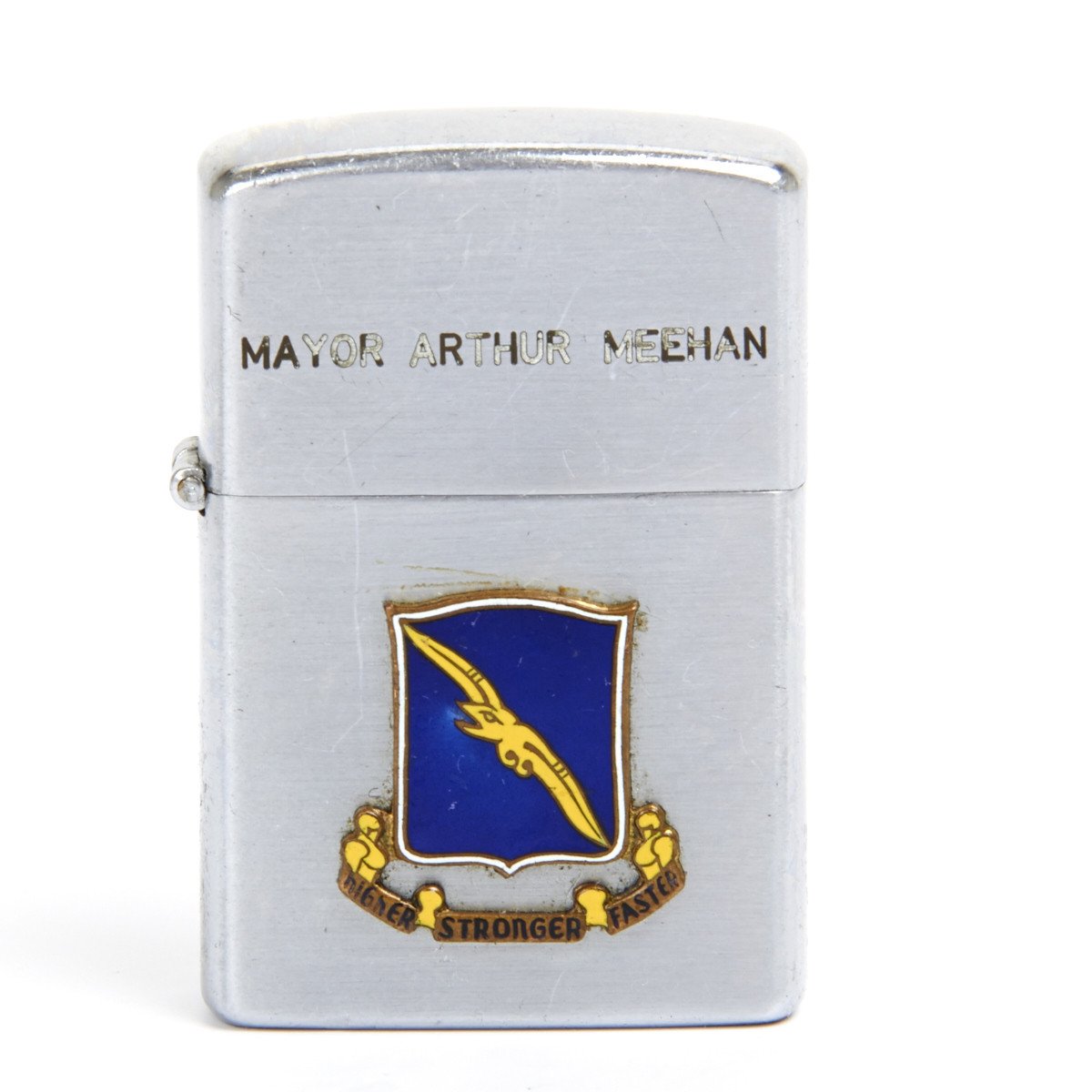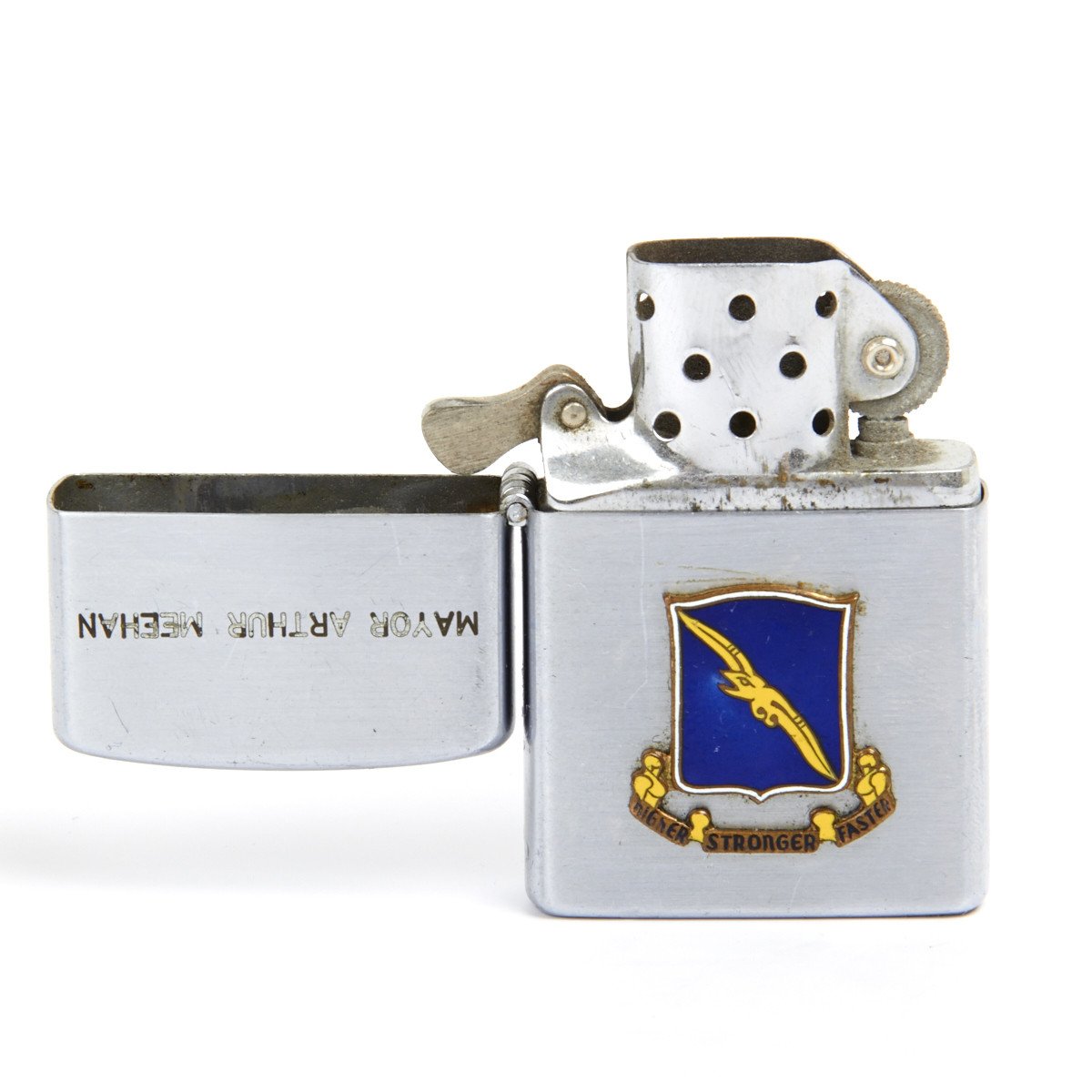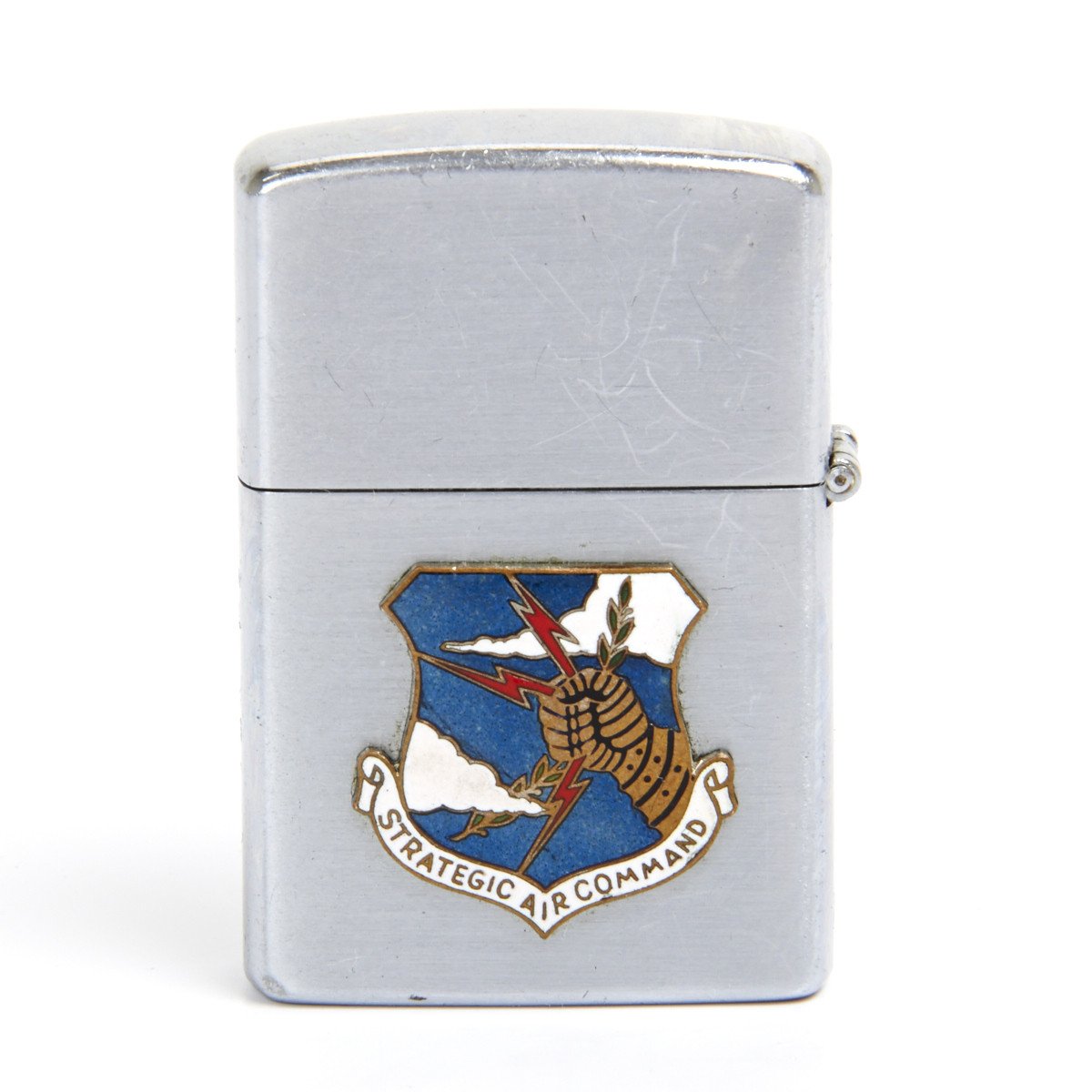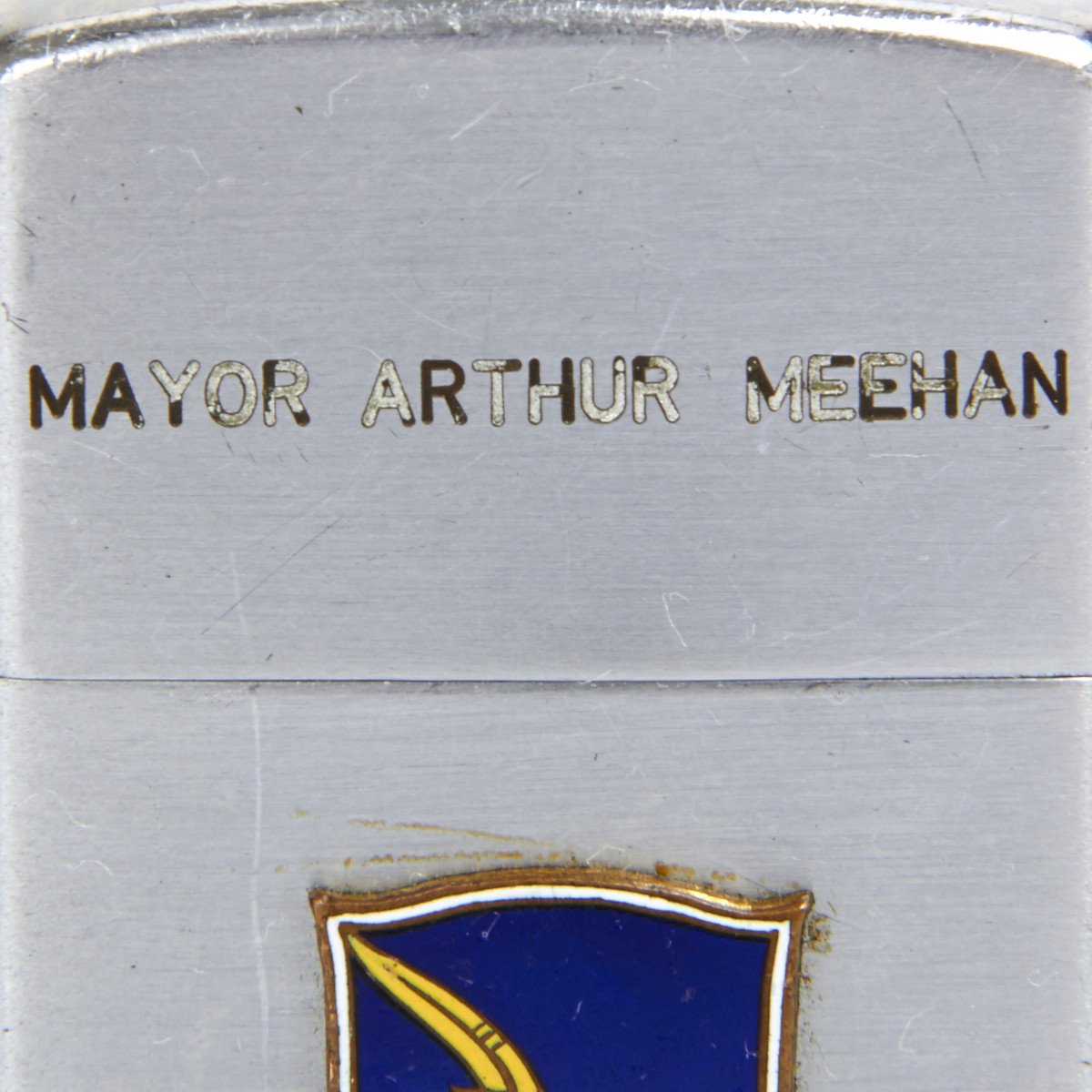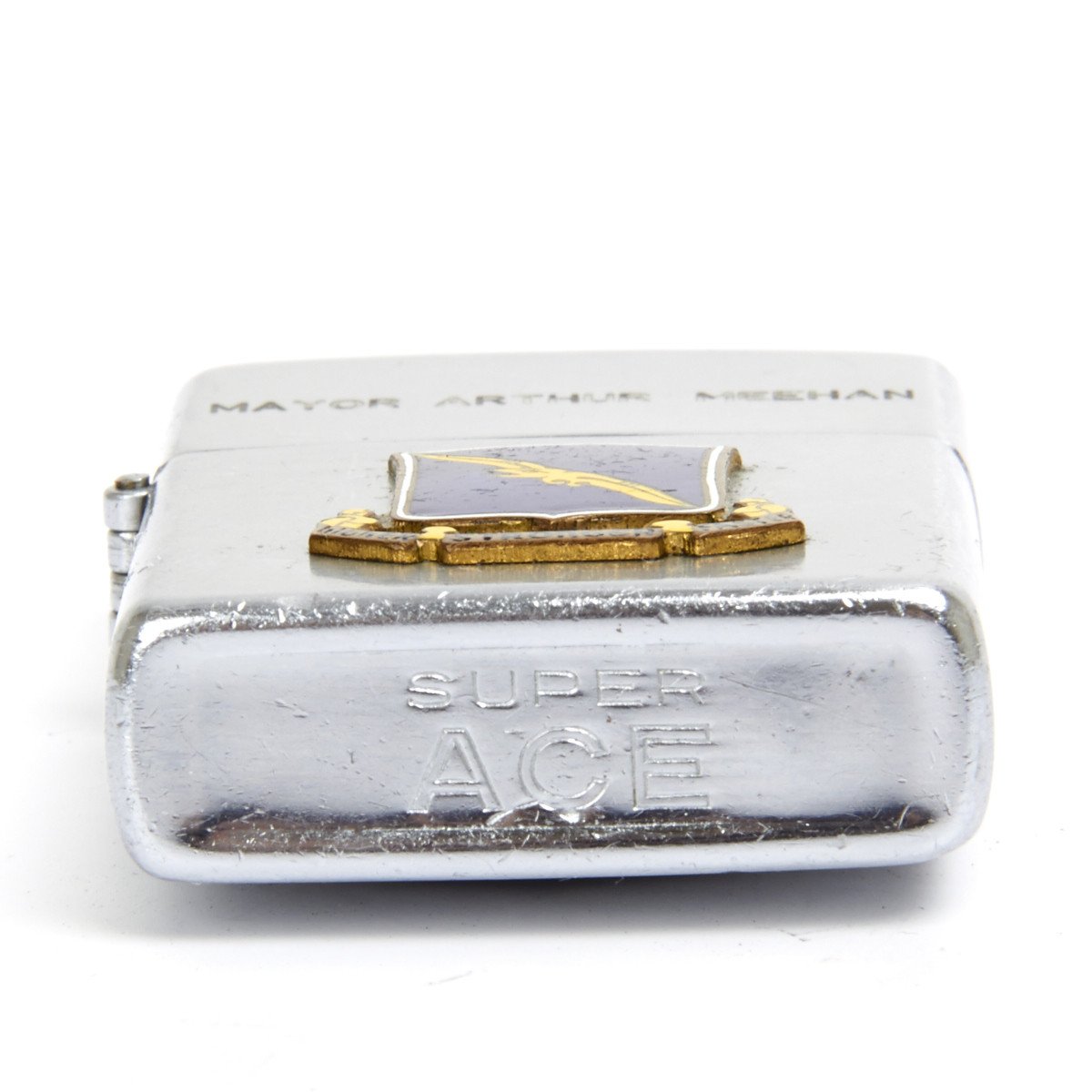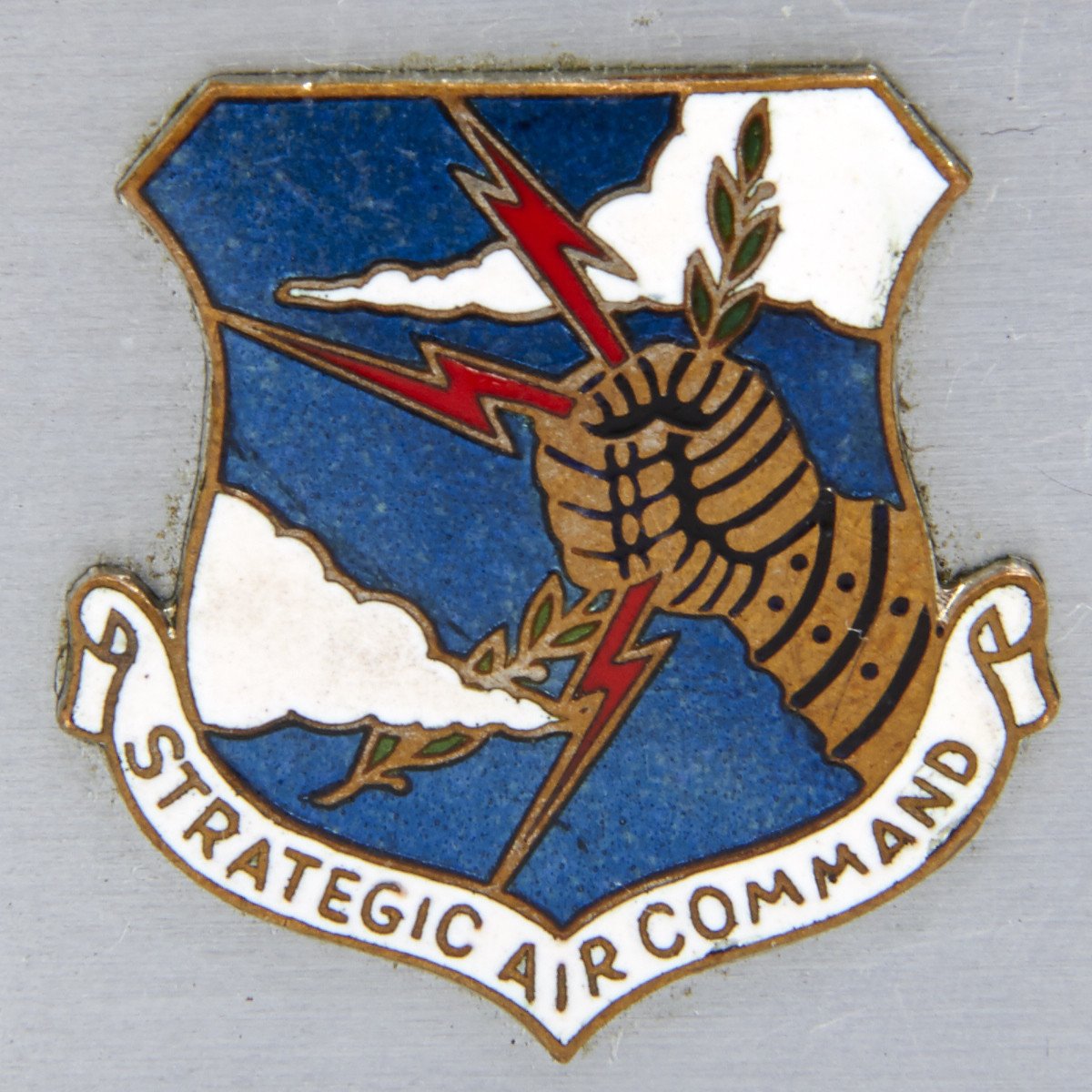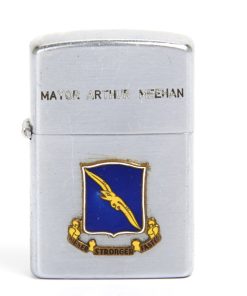Original 1967 U.S. Vietnam War Era Zippo Style Lighter Strategic Air Command- Named to Arthur Meehan Original Items
$ 135,00 $ 54,00
Original Item: Lighters could be customized with regimental cyphers and engravings, and were purchased by GIs returning home as a memento of their military service in the specific theatre of operation.
Excellent vintage ZIPPO style windproof lighter circa 1967 made by SUPER ACE.
Strategic Air Command (SAC) was both a Department of Defense Specified Command and a United States Air Force (USAF) Major Command (MAJCOM) responsible for Cold War command and control of two of the three components of the U.S. military’s strategic nuclear strike forces, the so-called “”Nuclear Triad,”” with SAC having control of land-based strategic bomber aircraft and intercontinental ballistic missiles (ICBMs). SAC also operated all USAF jet aerial refueling, strategic reconnaissance, and airborne command post aircraft.
SAC primarily consisted of the Second Air Force (2AF), Eighth Air Force (8AF) and the Fifteenth Air Force (15AF), while SAC headquarters (HQ SAC) included Directorates for Operations & Plans, Intelligence, Command & Control, Maintenance, Training, Communications, and Personnel. At a lower echelon, headquarters divisions included Aircraft Engineering, Missile Concept,[1] and Strategic Communications.
In 1992, as part of an overall post-Cold War reorganization of the U.S. Air Force, SAC was disestablished as both a Specified Command and as a MAJCOM, and its personnel and equipment redistributed among the Air Combat Command (ACC), Air Mobility Command (AMC), Pacific Air Forces (PACAF), United States Air Forces in Europe (USAFE), and Air Education and Training Command (AETC), while SAC’s central headquarters complex at Offutt AFB, Nebraska was concurrently transferred to the newly created United States Strategic Command (USSTRATCOM), which was established as a joint Unified Combatant Command.
Fast Shipping with Professional Packaging
Thanks to our longstanding association with UPS FedEx DHL, and other major international carriers, we are able to provide a range of shipping options. Our warehouse staff is expertly trained and will wrap your products according to our exact and precise specifications. Prior to shipping, your goods will be thoroughly examined and securely secured. We ship to thousands clients each day across multiple countries. This shows how we're dedicated to be the largest retailer on the internet. Warehouses and distribution centres can be located throughout Europe as well as the USA.
Note: Orders with more than one item will be assigned a processing date depending on the item.
Before shipping before shipping, we'll conduct a thorough inspection of the items you have ordered. Today, the majority of orders will be delivered within 48 hours. The delivery time will be between 3-7 days.
Returns
The stock is dynamic and we cannot completely manage it because multiple stakeholders are involved, including our factory and warehouse. So the actual stock may alter at any time. It's possible that you may not receive your order once the order has been made.
Our policy is valid for a period of 30 days. If you don't receive the product within 30 days, we are not able to issue a refund or an exchange.
You can only return an item if it is unused and in the same state as the day you received it. You must have the item in its original packaging.
Related products
Uncategorized
Uncategorized
Australian WWII Owen MK1 Machine Carbine SMG Custom Fabricated Replica with Sling Original Items
Uncategorized
Uncategorized
Uncategorized
Uncategorized
Uncategorized
Uncategorized
Uncategorized
Band of Brothers ORIGINAL GERMAN WWII Le. F.H. 18 10.5cm ARTILLERY PIECE Original Items
Uncategorized
Uncategorized
Uncategorized
Uncategorized
Uncategorized
Uncategorized
Uncategorized
Uncategorized
